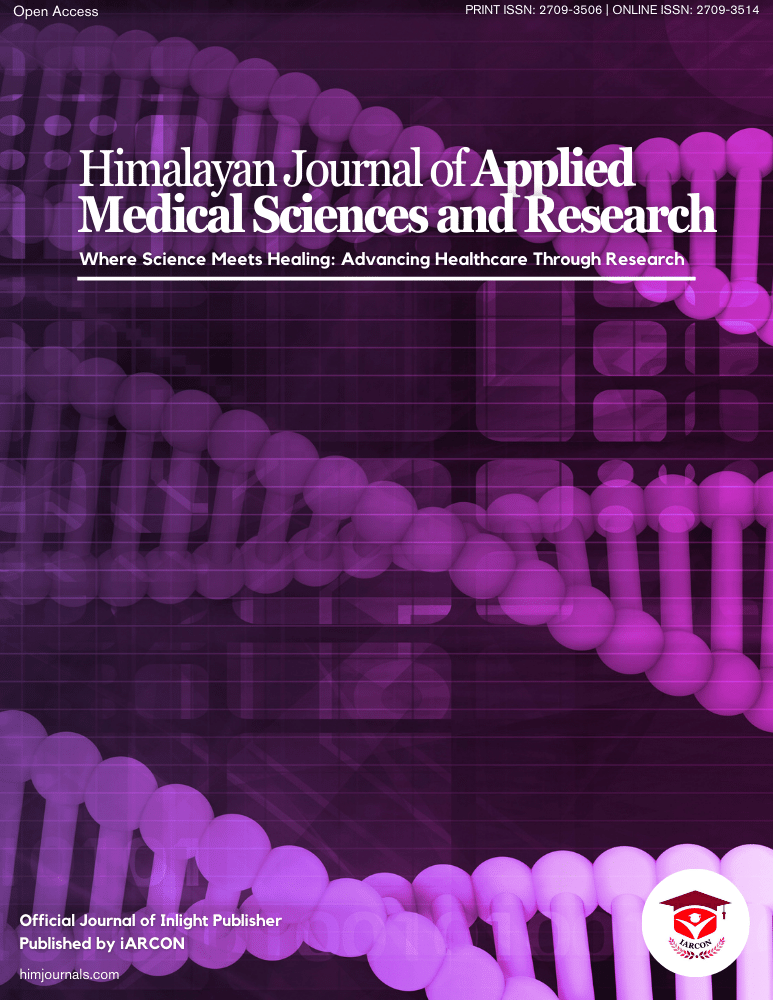Case 1
A 45 years, male, presented with cough, fever, sore throat and shortness of breath with decreased oxygen saturation. Nasopharyngeal swab for SARS-Cov-2 rRT-PCR (real time Reverse Transcription-Polymerase chain reaction) was positive and ground glass opacities were present in CT scan of chest. After few days the patient developed abdominal pain, nausea, vomiting, abdominal distension, guarding and rigidity. Radiograph of abdomen was suggestive of intestinal obstruction and exploratory laparotomy was done. Per operative findings were suggestive of gangrenous bowel one foot distal to duodenojejunal flexure up to ileocaecal junction (Figure 1). Gangrenous bowel was resected and proximal jejunostomy was created. Patient developed complications and expired on 6th post-operative day.
Case 2
A 33 years, male, presented with a history of cough, fever, shortness of breath with abdominal pain, nausea and vomiting. On examination, the patient was also having arrhythmias [7], blackening of right hand and forearm suggestive of gangrene of right upper limb and abdominal distension along with features of peritonitis. Nasopharyngeal swab for SARS-Cov-2 rRT-PCR was positive and ground glass opacities were present in CT of chest. CT angiography of right upper limb was done which was suggestive of thrombus in right subclavian artery and CT of abdomen was suggestive of features of superior mesenteric artery thrombus with mesenteric fat stranding and pneumatosis intestinalis (Figure 2). Exploratory laparotomy was done and gangrenous bowel from 1 foot distal to duodenojejunal flexure up to ileocaecal junction was resected and proximal jejunostomy was created. Patient succumbed to complications on 3rd post-oprative day.
Case 3
A 60 years, female, presented with a history of cough, fever, shortness of breath with abdominal pain, nausea and vomiting. On examination patient was having tachycardia, decreased oxygen saturation, abdominal tenderness but no features of peritonitis. Patient was SARS-Cov-2 rRT-PCR positive. There was thrombus in superior mesenteric artery suggestive of acute mesenteric ischemia (Figure 3 A&B). Conservative measures including bowel rest, nasogastric decompression, rehydration was done. Anticoagulant therapy with enoxaparin 0.6 ml subcutaneous twice daily was started. The patient responded to the treatment and discharged in satisfactory condition.
Case 4
A 30 years, female, presented with cough, fever, bloody diarrhoea, abdominal pain and vomiting. She was having difficulty in breathing and decreased oxygen saturation. Nasopharyngeal swab for SARS-Cov-2 rRT-PCR was positive and ground glass opacities were present in CT of chest. Features of acute mesenteric ischemia were present on CT of abdomen (Figure 4). Patient succumbed to pulmonary and abdominal complications on the same day.

Figure 1: Per-operative photograph showing extensive gangrene of the bowel loops

Figure 2: CECT abdomen coronal section showing mesenteric fat stranding along bowel (small white arrow) and wall thickening with pneumatosis intestinalis present in sigmoid colon (large white arrows)

Figure 3a: CECT abdomen sagittal section showing Aorta and its branches. Inferior mesenteric artery is not visualised (likely thrombosed) and terminal branches of superior mesenteric artery is having filling defects due to thrombus (white arrow) (Figure 3b): CECT abdomen coronal section. Liver is having air densities within portal venous branches with thickening of the wall of ascending colon with mesenteric fat stranding around bowel loops (white arrows)

Figure 4: CECT abdomen coronal section showing extensive mural thickening of small and large bowel loops with diffuse mesenteric fat stranding (white arrows)
Case 5
53 years, female, presented with cough, fever, nausea, vomiting and abdominal pain. Patient was not maintaining oxygen saturation and was SARS-Cov-2 RT-PCR positive. CT of chest was suggestive of ground glass opacities and features of acute mesenteric ischemia were present on CT of abdomen. Anticoagulant was started and the patient was managed conservatively but succumbed to pulmonary and abdominal complications of covid-19.






